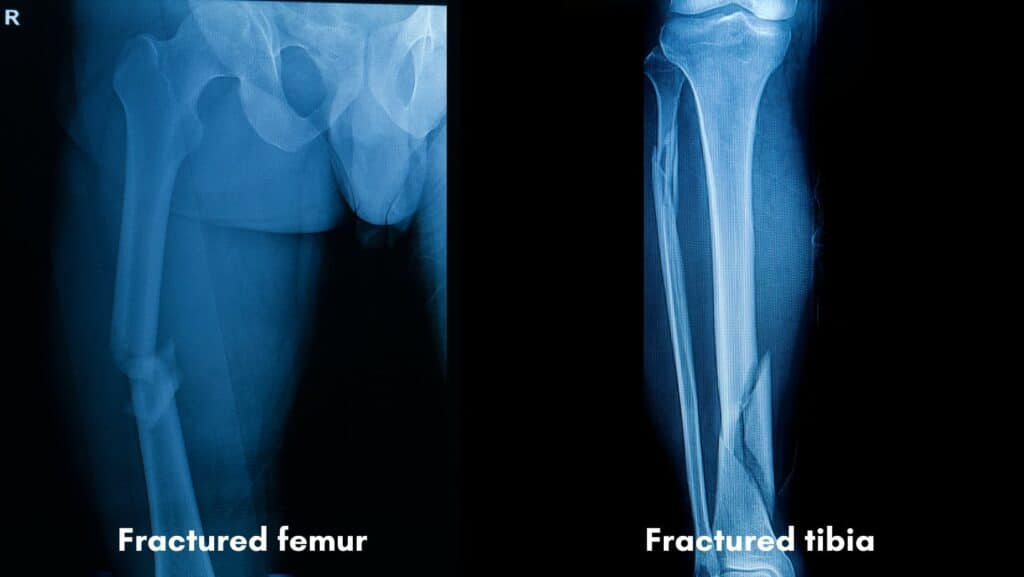Calcaneus Fracture (Broken Heel)
Read More >
‘Floating Knee’ is the term used to describe the unusual injury of fractures to both the tibia and femur, resulting in the knee having no structural continuity with the adjacent bones and is hence ‘floating’. This is a rare injury and is usually the result of severe trauma, such as a road traffic incident or a fall from a height.
Therefore, there are often additional injuries, such as ligament damage, injuries to other limbs, and head trauma. You can read more about other injuries to the knee that may be present following trauma in our related articles: Medial Collateral Ligament Injury, Lateral Collateral Ligament Injury, Anterior Cruciate Ligament Injury, Posterior Cruciate Ligament Injury, Meniscus Injury Recovery Time.

None of the fractures are near the joint surface.
One of the fractures is near the joint surface.
Type IIa: The femoral fracture is near the joint, at the condylar flare.
Type IIb: The tibial fracture is near the joint surface, at the condylar flare.
Both fractures are near the joint surface.
The most common treatments for ‘floating knee’ are non-operative with the use of external hinged braces, operative with external fixation and intramedullary nailing, and combined treatments. Operative treatments and a combination of operative and braces are preferred for a floating knee due to better long-term outcomes. These include the better union of the fractures, better knee range of movement, and better speed of return to functional activities. But there are often complications with this injury, including infection, nonunion or malunion, and damage to blood vessels and nerves (Dwyer et al, 2005). In some cases, it may not be possible to treat in these ways. In especially complicated cases, if the damage is severe amputation may be necessary. If this injury occurs in children it can cause issues such as leg length discrepancy if the fracture disrupts the growth plate.
Following stabilisation of the fractures as well as any other injuries and the individual’s general health, rehabilitation may proceed for the knee injury. The primary focus for early-stage rehabilitation will be to regain as much mobility in the knee as possible, improve the strength of the leg and return to functional activities such as walking, and ascending and descending stairs.
Working with a physical therapist with knowledge and experience with complex trauma and orthopedic injuries is essential for a good recovery from this complex injury.
Read more about rehabilitation for other knee injuries in our related articles: ACL Rehab Exercises, PCL Injury Recovery, MCL Injury Exercises, LCL Injury Exercises.

This is not medical advice. We recommend a consultation with a medical professional such as James McCormack. He offers Online Physiotherapy Appointments for £45.
Related Articles:
Best Exercises for Fractured Patella
Lateral Malleolus Fracture
Medial Malleolus Fracture